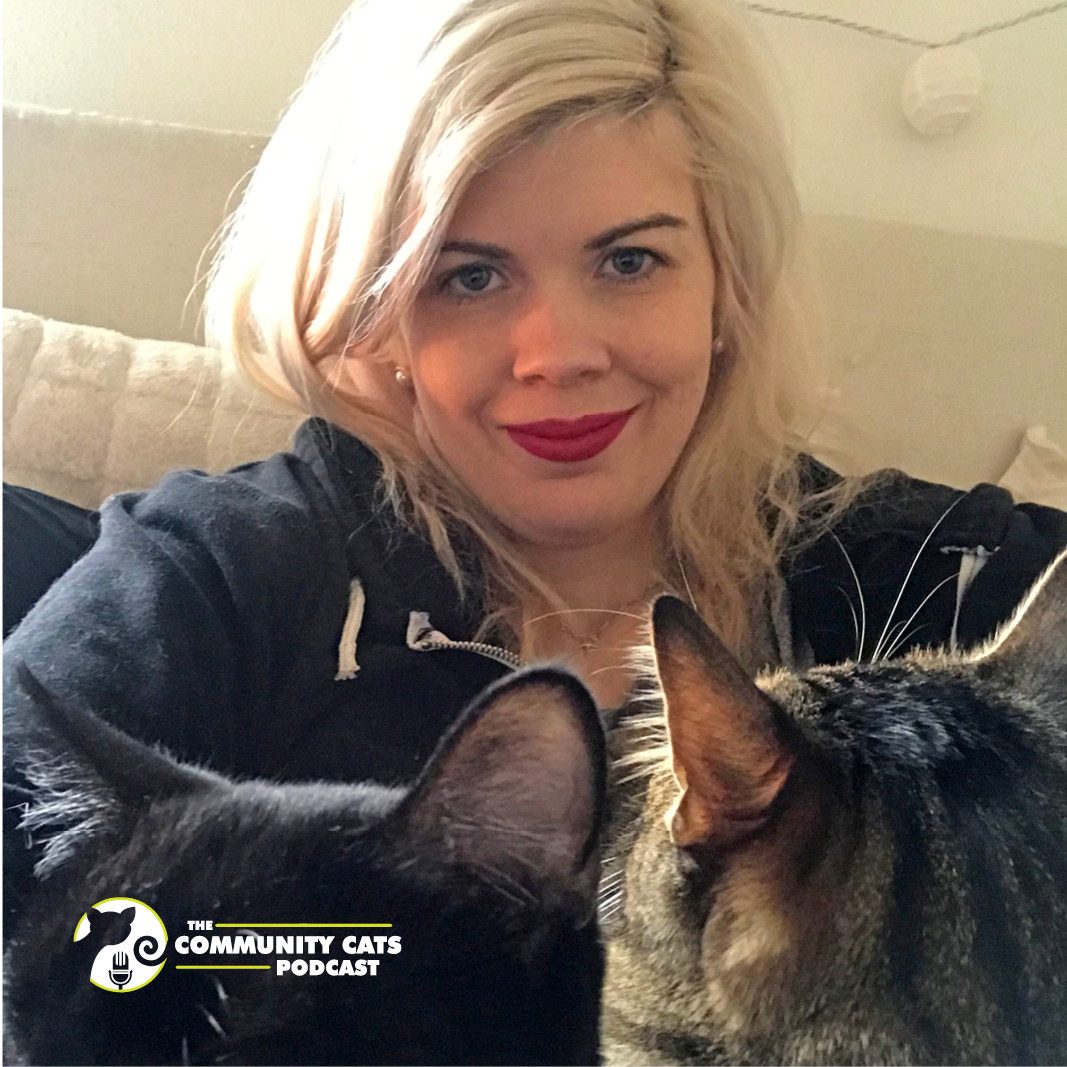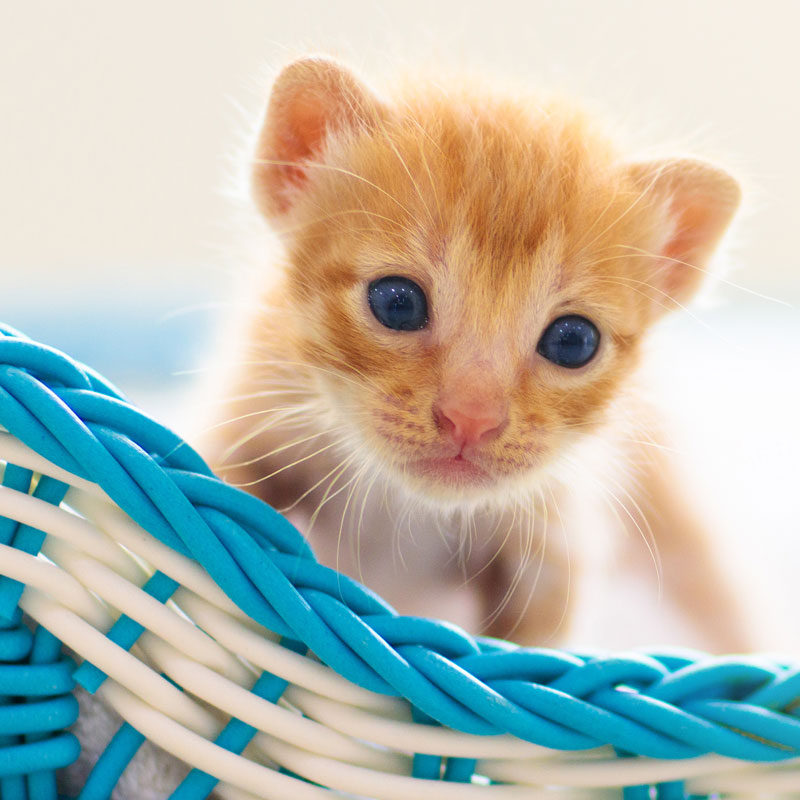
Daralyn Kelleher, YouTuber and Amateur Woodworker
June 1, 2021
Special Rebroadcast – Pam Johnson-Bennett, Certified Cat Behavior Consultant and Author
June 7, 2021
This week’s guest post is authored by Nancy Peterson of The National Kitten Coalition.
Best TNR (Trap-Neuter-Return) practices involve trapping the entire colony of cats at the same time, although there are times when this is not possible. When there are kittens to be trapped, there are additional considerations.
You will be terrifying to kittens who are unsocialized (have had minimal or no contact with people) and although they’re small, they can inflict serious injuries if they bite or scratch. So, never try to catch a feral kitten without protecting your hands with special protective gloves. That said, it’s preferable to use methods that are safer for everyone and will not add to the kittens’ fear of you.
Kittens have their best chance of survival with a healthy mom cat. If they’re doing well and are in a safe area, wait until they’re about 6 weeks old to trap kittens. At that age, they should also be big enough to set off a trip plate that’s working well.
If you want to only trap kittens and not whoever wanders into the trap, you can bypass the trip plate and use the bottle and string technique, which lets you manually close the door. Another technique presented by Neighborhood Cats involves modifying a box trap into a “kitten-only” trap that uses a kitten screen. The Neighborhood Cats TNR Handbook provides detailed trapping instructions and is available on their website. Other Neighborhood Cats resources are available on the Community Cats Podcast website.
Kitten season is all too familiar to those in rescue. Unfortunately, in some regions, kitten season is a year-round phenomenon. Some TNR groups don’t trap feral cats during winter, but many do. One of the advantages of doing so includes preventing the birth of kittens come spring.
Despite your best efforts, it’s likely there will be nursing moms to consider for trapping. Here’s what you need to think about regarding nursing moms and kittens whose age and location are unknown. Any cat can be “examined” by lifting the trap and looking at its nipples. If they’re distended, this could indicate she’s recently or currently nursing. Sadly, feral kitten mortality is high even if mom is present. However, once mom has experienced being trapped, she may never enter a trap again. If mom is spayed and returned within 24 hours, however, kittens 2 weeks and older may survive her short absence.
Perhaps you’re a colony caretaker or trapping for a colony caretaker and are familiar with the cats’ routines. If you trap a female and discover she’s nursing and feel confident she’ll continue to come around for food, you may decide to release her right away. Hopefully, she’ll bring her kittens when they’re old enough to eat on their own and you can trap the whole family.
If you or another caretaker have noticed one or more of your colony cats is pregnant, you can approximate the kittens’ ages when mom shows up with a smaller belly. Even if you don’t know where the kittens are located, if you know their approximate ages, you can gauge the danger to them if mom is gone for 24 hours for spaying. If you know for sure that they’re too young to survive mom’s brief absence, you may decide to immediately release her and hope she brings them around when they’re older.
If you trap a nursing mom, know the age and location of her kittens and have the resources to foster, socialize, and adopt, options include:
- Trapping mom and the kittens when they are discovered. This is beneficial because mom does all the work. However, if mom continues to be highly stressed by being confined and subjected to being around people, it may be best to spay, vaccinate, ear tip, and return her to her caretaker.
- Leaving the family until the kittens are 5 or 6 weeks old. At that age, they can be weaned and will still be within the primary socialization period (2–7 weeks), when it’s easiest to socialize them to people.
- Trapping the family when kittens are discovered. Spay, vaccinate, ear tip, and return mom, but keep the kittens for socialization. Depending on the kittens’ ages, they may require round-the-clock bottle feeding and care, which requires additional foster training and equipment.
When trapping families, it’s best to catch the kittens first in order not to inadvertently leave any kittens behind without their mom. Once you have all the kittens, you can use them to lure mom into a separate trap.
If you trap a pregnant cat, options include spaying her, letting her give birth in a confined space to raise the kittens, or allowing her to remain outdoors and trapping the family at a later time.
In all circumstances involving feral kittens, it’s preferable to find them loving homes if resources are available. The National Kitten Coalition (NKC) is an excellent source of free webinars and information for individuals who are fostering on their own or animal shelters and rescue organizations building their foster programs. Also, be sure to check out the Online Kitten Conference, presented by The NKC and Community Cats Podcast, coming up June 11–13, 2021.
Nancy Peterson worked as a registered veterinary technician, trainer of dogs for people with disabilities other than blindness, and as the community cats program manager for the Humane Society of the United States. She retired in 2015 and currently serves on the boards of Neighborhood Cats and The National Kitten Coalition. Nancy volunteers as a foster and cat cuddler for her local animal shelter. During COVID-19, she became an avid birder and is working to build bridges between cat and bird advocates.




